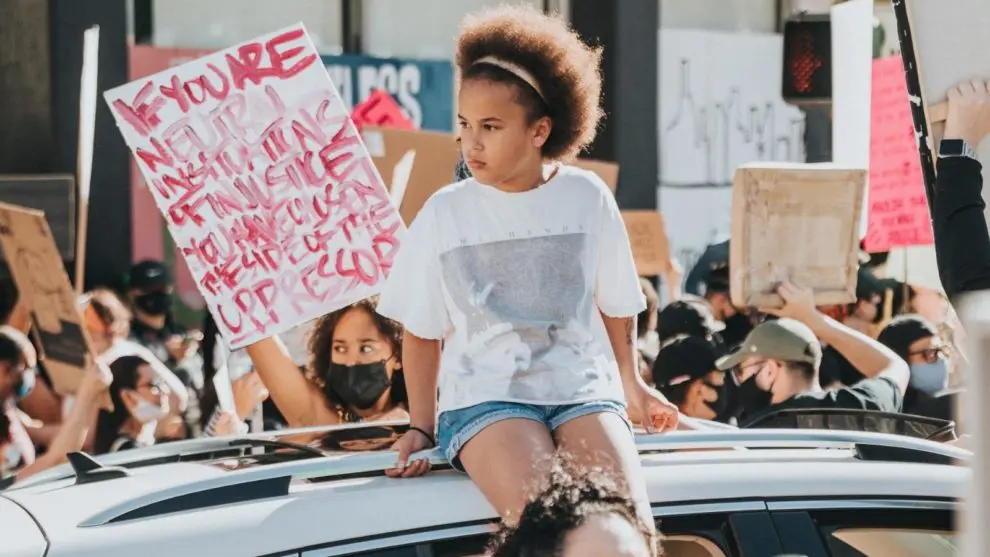
Today is World Children’s Day, first established by the United Nations in 1954 to celebrate children and commit to improving their well-being.
World Children’s Day is also the anniversary of the adoption of the Convention on the Rights of the Child (CRC), the foundational treaty recognizing children as rights-holders. The treaty emanates from the principles of non-discrimination, best interest of the child, child survival and development, and child participation. It prohibits the prison sentence of life without parole for children. It states that immigrant families should be together and reunified, and that migrants have rights that countries must protect. It outlines a right to an education that develops a child’s abilities, personality, and understanding of the world. In short, the Convention addresses all the child rights violations that advocates have cited time and again in the United States.
Notably, the United States is the only country in the world who has not ratified the CRC. Despite that, our country can still uphold child rights in our laws and policies, as we have repeatedly called on the nation’s leaders to do.
Last year, we wrote about the countries’ evaluation of the United States’ human rights record and the child-specific recommendations. While countries evaluated the Trump Administration’s record, it was the Biden Administration that would be responsible for implementing the recommendations. As we stated, “The recommendations released from the [UN human rights review] process offer an opportunity for the new Biden-Harris administration and a new Congress to remedy the human rights violations of the past four years and bring human rights home for all of us.” Our question this year is, how did they do when it came to kids, and what is left to be done?
Racial Equity
Progress: The Biden Administration has made racial equity a key priority. The President issued an executive order on advancing racial equity and supporting underserved populations and established a White House Equity Office. In turn, agencies have put out requests for information and strategic plans to implement the executive order.
Next Steps:
- Create culturally competent services and interventions that have been developed and tested in diverse communities
- Fully integrate children into government plans and efforts to achieve equity
Juvenile Justice
Progress: President Biden issued an executive order limiting the use of private prisons. The President also issued a proclamation on National Youth Justice Action Month.
Next Steps:
- Appoint a permanent Administrator for the Office of Juvenile Justice and Delinquency Prevention who is committed to racial and ethnic equity and to full implementation of the Juvenile Justice and Delinquency Prevention Act
- Collect data on the number of minors in adult facilities at both federal and state levels
- Ban For-Profit Facilities, including detention and correctional centers
- Launch a public education and engagement campaign to showcase various pathways to juvenile justice system involvement
Immigration
Progress: The Administration has developed a Family Reunification Task Force to reunify families separated by the previous administration and provide them with services. The Administration has taken steps to limit family detention and expand legal representation for children. It has also reinstated and expanded the Central American Minors Program, allowing more children to reunite with family in the United States.
Next Steps:
- Welcome children at the border by implementing orderly and humane border processing, providing for basic needs, and offering information about the immigration process
- Protect family unity. End family separation, including separation caused by policies such as expulsions and limits on entry at the border
- Ensure the right to liberty. End family detention and institutionalized care for unaccompanied children by using family- and community-based case management.
- Expand legal representation to all children during their immigration cases
- Restore asylum access and refugee resettlement for children and families
- Prioritize child health and well-being by considering the best interests of children in all immigration policy decisions, including immigration enforcement actions and immigrant access to services
Education
Progress: The bipartisan infrastructure bill will provide broadband funding which will take strides to bridge the digital divide which affects children’s access to the internet in a time when so much of learning takes place virtually. The Build Back Better plan, just passed by the House, will provide free and universal pre-k to all 3- and 4-year olds. The President’s FY 2022 budget proposed investments into equity through Title I funding to take steps to counteract decades of unequal school funding, which has seen mostly white schools getting far more funds than their mostly non-white counterparts.
Next Steps:
- Ensure universal access to adequate and equitable education without barriers based on class or race, disability, or citizenship status, by prioritizing the funding of public schools over charter and voucher systems. Ban for-profit management of charter schools
- End the use of harmful and exclusionary disciplinary practices like suspension and expulsion, which disproportionately target Black, brown, and indigenous children.
- Support culturally responsive and sustaining curriculums, as opposed to test-based standards
- Provide suitable education for students with disabilities, English learners, and students in foster care and experiencing homelessness by passing expanded Title I, IDEA, and McKinney-Vento funding
- Pass expanded funding for social–emotional learning, counseling, and medical support in schools to support student mental and physical health
- Desegregate schools as a necessary step toward civil rights in education
Child Rights Mechanisms
Progress: The Biden Administration has introduced — and the House has passed — the Build Back Better agenda, which has the potential to be the biggest advancement for children in decades. The President also issued an executive order on modernizing regulatory reform to “promote the interests of future generations.” The President’s FY 2022 budget also promises to provide the highest share of federal spending on children since 2016, at 12.7% of total spending. The President also recognized children by proclaiming November 21, 2021 as National Child’s Day.
Next Steps:
- Establish an independent Children’s Commissioner to report and provide recommendations on advancing children rights, in consultation with children and youth
- Create a White House Office of Children and Youth to facilitate interagency coordination on policies affecting child health and well-being
- Establish a national “best interest of the child” standard
- Require child impact statements for all policies that impact the health and well-being of children

